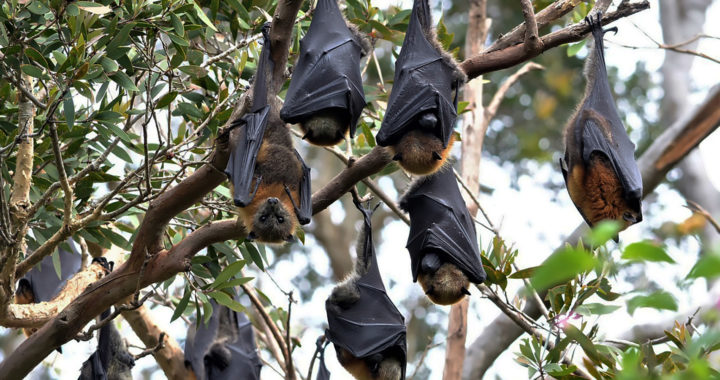Several Nipah virus infection outbreaks due to Nipah virus have occurred in North East Africa and South and Southeast Asia. The cause of most of these outbreaks has always been zoonotic or a result of a spillover effect in which humans contracted the virus following exposure to contaminated secretions or tissues of infected animals. The exact origin of the Nipah virus exemplifies the threat of zoonotic diseases in human population and their potential to cause widespread epidemics and pandemics.
A Look Into the Origin of Nipah Virus and How It Spread to Humans
The first cases of Nipah virus infection transpired from September 1998 to May 1999 in the three Malaysian states. These were Perak, Negeri Sembilan and Selangor. The initial outbreak was described as a neurological and respiratory disease that was traced from pig farms. Some mistaken the disease for Japanese encephalitis until the actual causative pathogen was isolated and identified in 1999. The virus was called Nipah after the Sungai Nipah or Nipah River in Port Dickinson in the Malaysian State of Negeri Sembilan.
Virology and Evolution
Subsequent studies since its first isolation revealed that Nipah virus belongs to the genus Henipavirus the greater Paramyxovirus family of negative-stranded RNA viruses. It is related to the Hendra virus which has been traced from fruit bats in Australia and the Pacific and has caused fatal cases of infections and outbreaks in horses and humans.
The specific Nipah virus is a single negative-sense and single-stranded RNA of over 18 kb. A. Lo Presti et al. noted that its most possible origin was in 1947 with a 95 percent credible interval between 1888 and 1988. The original virus produced two clades or descendants. These include a clade originating in 1985 and another clade originating in 1995.
It is also worth noting that the Paramyxovirus family of viruses has been discovered in a range of terrestrial, aquatic, and avian animals. This demonstrates a vast host range and great viral genetic diversity. Viruses under the specific Henipavirus genus are naturally harbored by several species of small animals such as fruit bats, microbats, and shrews.
Fruit bats or the flying foxes of the genus Pteropus in South and Southeast Asia are the known natural reservoir host of the Nipah virus. These animals have carried the virus along with other viruses such as Ebola but their high body temperature, genes for antiviral defense, and immune response have enabled them to host these pathogens without getting sick.
First Human Transmission
Remember that the first known case of Nipah virus infection occurred in Malaysia in 1998. The World Organization for Animal Health hypothesized that the spillover effect or the transmission from animals to humans was a result of widespread deforestation programs that increased contact between fruit bats and human communities and domestic animals.
The aforesaid hypothesis has been supported by established studies explaining the causes of the spillover effect. Even institutions such as the World Health Organization have raised the alarms about the possible emergence of zoonotic diseases and subsequent epidemics because of increasing human-wildlife interaction and destruction of wildlife habitats.
Other cases of Nipah virus infection outbreaks were due to human-wildlife interaction. Researchers E. S. Gurley et al. have noted that the convergence between human settlements, fruit bat habitats, and culture has been the cause of outbreaks in Bangladesh. The specific cause stemmed from the consumption of contaminated date palm sap.
It is also important to note that human-to-human transmission is possible. This route is common in hospital settings and has been categorized under hospital-acquired infection. There is no strong evidence suggesting that the virus is evolving to enhance its human-to-human transmission route but this is possible through increased infectious cases.
FURTHER READINGS AND REFERENCES
- Gurley, E. S., Hegde, S. T., Hossain, K., Sazzad, H. M. S., Hossain, M. J., Rahman, M., Sharker, M. A. Y., Salje, H., Islam, M. S., Epstein, J. H., Khan, S. U., Kilpatrick, A. M., Daszak, P., and Luby, S. P. 2017. “Convergence of Humans, Bats, Trees, and Culture in Nipah Virus Transmission, Bangladesh.” Emerging Infectious Diseases. 23(9): 1446-1453. DOI: 3201/eid2309.161922
- Lo Presti, A., Cella, E., Giovanetti, M., Lai, A., Angeletti, S., Zehender, G., and Ciccozzi, M. 2015. “Origin and Evolution of Nipah Virus. Journal of Medical Virology. 88(3): 380-388. DOI: 1002/jmv.24345
- Parrish, C. R., Holmes, E. C., Morens, D. M., Park, E-C., Burke, D. S., Calisher, C. H., Laughlin, C. A., Saif, L. J., and Dazak, P. 2008. “Cross-Species Virus Transmission and the Emergence of New Epidemic Diseases.” Microbiology and Molecular Biology Reviews. 72(3): 457-470. DOI: 1128/MMBR.00004-08
- World Organization For Animal Health. n.d. “Nipah Virus.” World Organization For Animal Health. Available online

